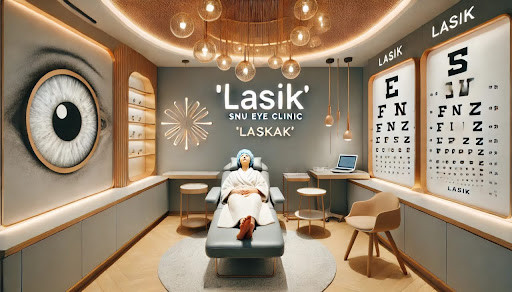Photorefractive keratectomy (PRK) is a type of laser eye surgery that corrects refractive vision problems such as myopia (nearsightedness), hyperopia (farsightedness), and astigmatism. As one of the earliest forms of laser vision correction, PRK remains a trusted alternative to LASIK for certain patients. While both procedures reshape the cornea to improve vision, PRK has distinct differences lasik that make it more suitable for individuals with specific eye conditions or lifestyle needs. This article explores how PRK works, its advantages and disadvantages, and who stands to benefit most from the procedure.

PRK begins by removing the thin outer layer of the cornea, known as the epithelium. This step is performed using a special brush, alcohol solution, or blunt instrument. Unlike LASIK, which involves cutting a flap in the cornea, PRK works directly on the surface. Once the epithelium is removed, an excimer laser reshapes the underlying corneal tissue to correct the patient’s refractive error. After the laser treatment, a bandage contact lens is placed on the eye to protect it while the epithelium naturally regenerates over the course of several days. The entire process typically takes less than 15 minutes per eye.
One of the main advantages of PRK is that it avoids the complications associated with corneal flaps, which are necessary in LASIK surgery. This makes PRK especially beneficial for individuals with thin corneas, irregular corneal surfaces, or those engaged in high-contact sports or military service where the risk of eye trauma is higher. Additionally, since PRK does not involve cutting deeper layers of the cornea, there may be less long-term weakening of the corneal structure, making it a safer choice for certain patients. However, the healing process after PRK is longer and more uncomfortable than LASIK, typically requiring several days of downtime and up to a month for vision to stabilize.
Ideal candidates for PRK are those who have stable vision prescriptions, are at least 18 years old, and are not pregnant or nursing. They should also have healthy eyes, free from infections, severe dry eye, or corneal scarring. Individuals with thin corneas or those deemed ineligible for LASIK due to risk factors such as chronic dry eye or irregular corneal topography often turn to PRK as a safer alternative. Furthermore, athletes and active individuals who risk eye injury may be advised to consider PRK to avoid flap-related complications.
Despite its benefits, PRK does come with some disadvantages. Post-operative discomfort can include burning, tearing, and light sensitivity during the initial recovery period. Vision may be blurry for several days to weeks, and patients typically require more follow-up visits than LASIK patients. Eye drops and protective eyewear are crucial during healing to prevent infection and promote proper regeneration. While PRK’s visual outcomes are comparable to LASIK in the long term, the slower recovery timeline requires patience and careful post-operative care.
In conclusion, PRK remains a reliable and effective laser vision correction procedure, especially for those who are not ideal candidates for LASIK. Its flap-free technique provides distinct safety advantages for people with thin corneas or those with active lifestyles. Although the recovery process is longer and more uncomfortable, the end results offer significant improvements in vision and quality of life. Individuals considering vision correction surgery should consult with an experienced ophthalmologist to determine whether PRK or another method is best suited to their specific needs and eye health.